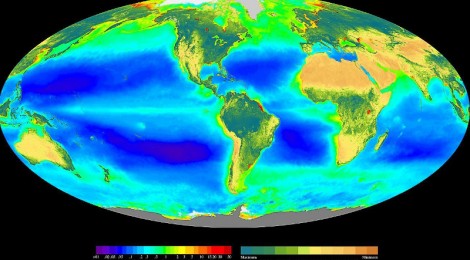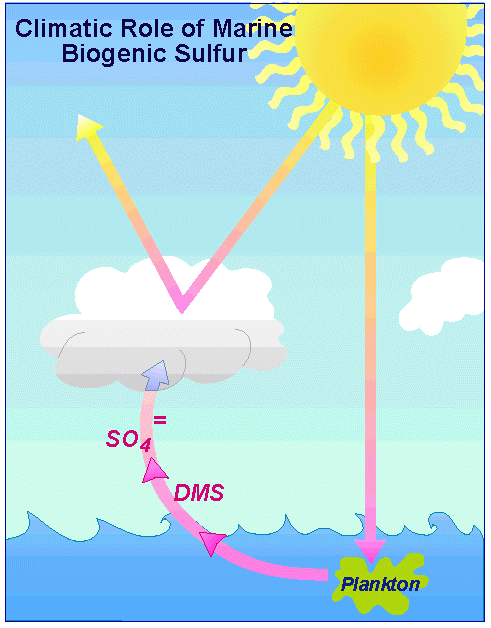
Clouds From Plankton Blooms Control Weather
Ocean plankton produce clouds as they thrive
Ocean plankton is the largest natural factor of this blue planet when it comes to managing CO2 (and sunlight via clouds.) These micro plants of the world’s ocean convert CO2 from its ocean acidifying form and global warming form into more ocean plants, phytoplankton. They are just being plants like any other which complete this miracle through photosynthesis. But very few people know that ocean plants also control the amount of sunlight that falls on the ocean by producing a chemical known as DMS that is a powerful cloud forming compound.
A NASA-funded study shows that when the Sun beats down on the top layer of ocean where plankton live, harmful rays in the form of ultraviolet (UV) radiation bother the little plants. It is the same UV light also gives sunburn to humans. When it gets bad the clouds made by plankton arise when the plants produce sufficient DMS to create their own shade in the form of those fluffy white clouds. The study was conducted by Dierdre Toole of the Woods Hole Oceanographic Institution (WHOI) and David Siegel of the University of California, Santa Barbara (UCSB).

Clouds made by plankton reflect ~25% of the suns heating energy away from the planet, keeping the plankton and us safe.
The plankton effectively protect themselves by producing a chemical compound called DMSP, which some scientists believe helps strengthen the plankton’s cell walls. This chemical gets broken down in the water by bacteria, and changes into another substance called DMS.
DMS then filters from the ocean into the air, where it breaks down again to form tiny dust-like particles. These tiny particles are just the right size for water to condense on, which is the beginning of how clouds are formed. So plankton help create more clouds, and more clouds mean that less direct light reaches the ocean surface. This relieves the stress put on plankton by the Sun’s harmful UV rays.
DMS levels peak during the sunniest times of the year. Surprisingly, plankton levels near the surface are often at a low during this time under clear skies. During the summer, the study found that a whopping 77 percent of the changes in amounts of DMS were due to exposure to UV radiation. The researchers found it amazing that a single factor could have such a big effect on this large-scale weather process.
“For someone studying marine biology and ecology, this type of variation is absolutely incredible,” Siegel said.
The researchers were also surprised to find that the DMS molecules are short-lived in the atmosphere and are gone after only three to five days. This means for the plankton to sustain cloudy weather for periods as long as is observed they must have the capacity to react to UV rays quickly and sustainably to modify and sustain their own weather. Toole and Siegel were surprised by the lightning-fast rate of turnover for DMS.
By figuring out how plankton react to light, scientists now have the information they need to use computer models to recreate the impacts of plankton on cloud cover. Since the low bright white clouds that accompany plankton blooms can reflect sunlight back out to space it is clear that plankton-made clouds may have an enormous effect on global temperatures by reflecting the suns warming rays back into the cold of space.
This albedo effect of plankton formed clouds is likely equal to removing billions of tonnes of CO2 from the world’s greenhouse warming effect perhaps as great an effect as the physical capture and conversion of CO2 into plankton biomass. Together these twin ocean plankton effects are undoubtedly have the largest biological role on the planet with regard to CO2.
Given the collapse of ocean pastures and phytoplankton production restoration and revival of ocean plants back to levels of abundance of 100 years ago might easily mitigate the impact of several billion tonnes per year of anthropomorphic CO2.
Ref.
Mr. James Lovelock Gaia – Charlson, R.J., Lovelock, J.E., Andrea, M.O. and Warren, S.G. 1987. Oceanic phytoplankton, atmospheric sulfur, cloud albedo and climate. Nature 326: 655-661.








